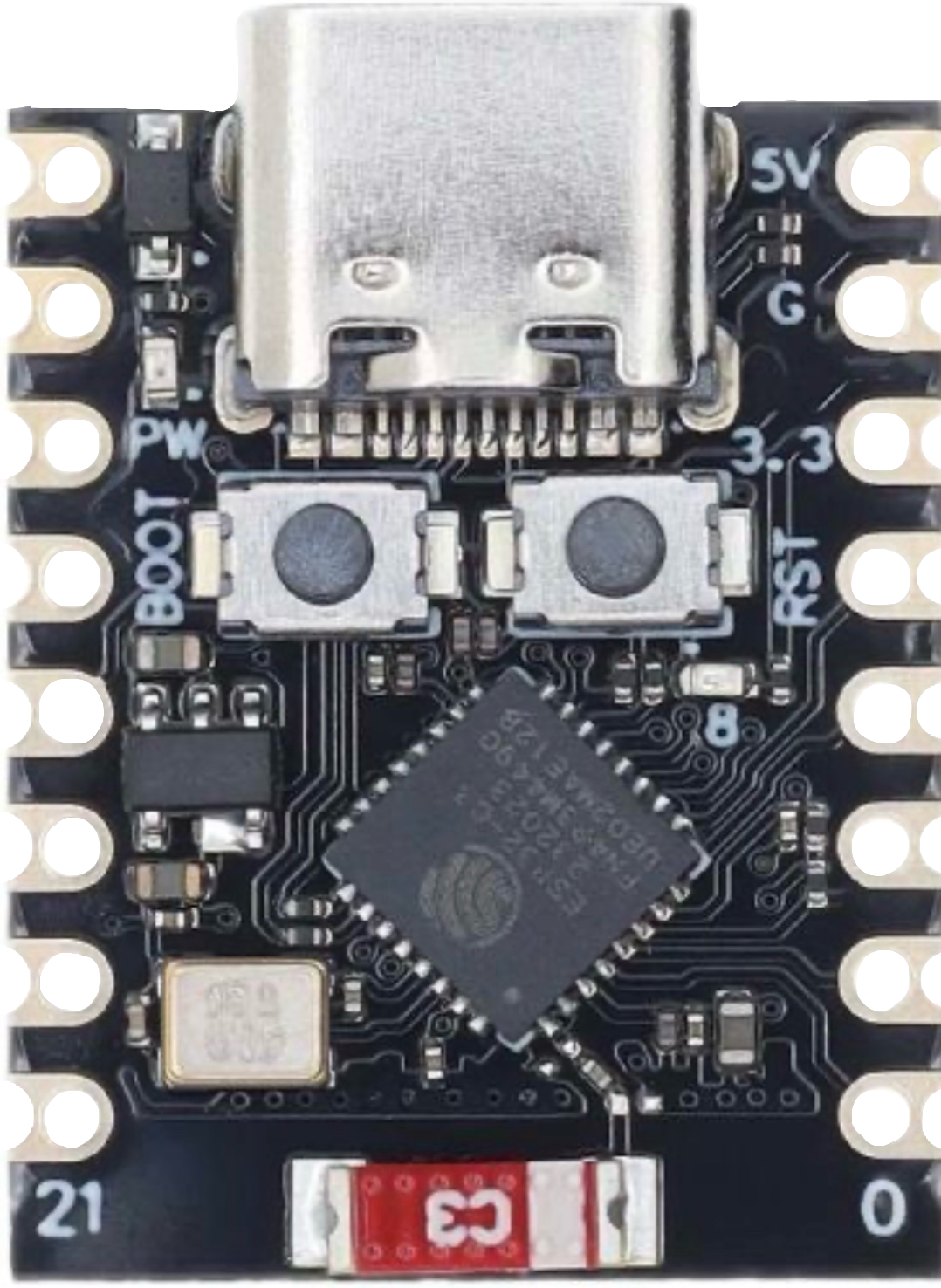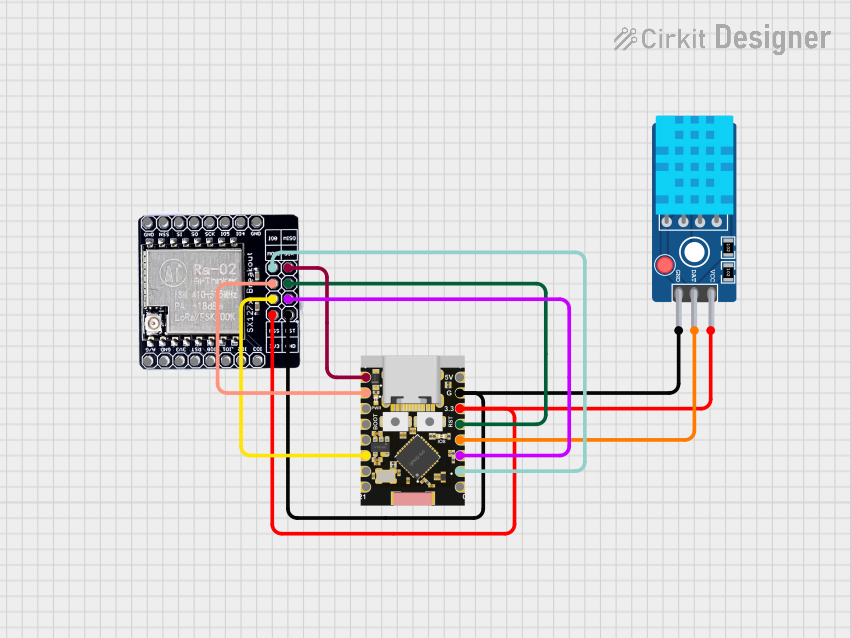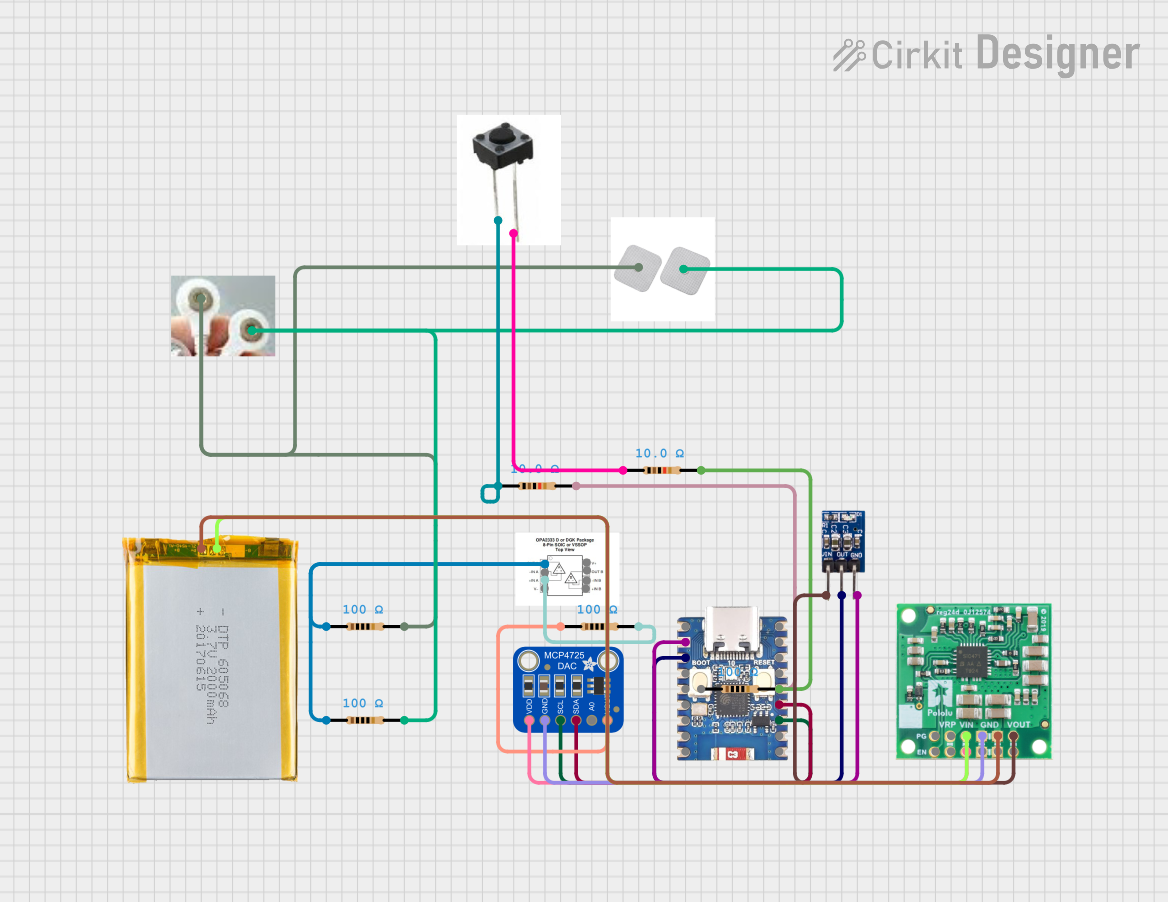
How to Use esp32 c3 super mini: Examples, Pinouts, and Specs

 Design with esp32 c3 super mini in Cirkit Designer
Design with esp32 c3 super mini in Cirkit DesignerIntroduction
The ESP32-C3 Super Mini, manufactured by Espressif, is a compact and powerful microcontroller designed for IoT applications. It features integrated Wi-Fi and Bluetooth Low Energy (BLE) capabilities, making it an excellent choice for projects requiring wireless connectivity. With its RISC-V single-core processor, low power consumption, and robust security features, the ESP32-C3 Super Mini is ideal for smart home devices, wearables, industrial automation, and more.
Explore Projects Built with esp32 c3 super mini

 Open Project in Cirkit Designer
Open Project in Cirkit Designer
 Open Project in Cirkit Designer
Open Project in Cirkit Designer
 Open Project in Cirkit Designer
Open Project in Cirkit Designer
 Open Project in Cirkit Designer
Open Project in Cirkit DesignerExplore Projects Built with esp32 c3 super mini

 Open Project in Cirkit Designer
Open Project in Cirkit Designer
 Open Project in Cirkit Designer
Open Project in Cirkit Designer
 Open Project in Cirkit Designer
Open Project in Cirkit Designer
 Open Project in Cirkit Designer
Open Project in Cirkit DesignerCommon Applications
- IoT devices and smart home automation
- Wireless sensor networks
- Wearable technology
- Industrial IoT and automation
- Prototyping and development of connected devices
Technical Specifications
Key Technical Details
| Specification | Value |
|---|---|
| Processor | RISC-V single-core, 32-bit, up to 160 MHz |
| Flash Memory | 4 MB (varies by model) |
| RAM | 400 KB SRAM |
| Wi-Fi | 802.11 b/g/n (2.4 GHz) |
| Bluetooth | BLE 5.0 |
| Operating Voltage | 3.3V |
| GPIO Pins | 15 (multipurpose) |
| Power Consumption (Active) | ~100 mA |
| Power Consumption (Deep Sleep) | ~5 µA |
| Security Features | Secure Boot, Flash Encryption |
| Dimensions | 18 mm x 21 mm |
Pin Configuration and Descriptions
The ESP32-C3 Super Mini has a compact pinout. Below is the pin configuration:
| Pin Number | Pin Name | Description |
|---|---|---|
| 1 | 3V3 | 3.3V power input |
| 2 | GND | Ground |
| 3 | GPIO0 | General-purpose I/O, boot mode selection |
| 4 | GPIO1 | General-purpose I/O |
| 5 | GPIO2 | General-purpose I/O |
| 6 | GPIO3 | General-purpose I/O |
| 7 | GPIO4 | General-purpose I/O |
| 8 | GPIO5 | General-purpose I/O |
| 9 | RXD | UART Receive (Serial Communication) |
| 10 | TXD | UART Transmit (Serial Communication) |
| 11 | EN | Enable pin, used to reset the module |
| 12 | ADC | Analog-to-Digital Converter input |
| 13 | SDA | I2C Data Line |
| 14 | SCL | I2C Clock Line |
| 15 | RST | Reset pin |
Usage Instructions
How to Use the ESP32-C3 Super Mini in a Circuit
- Powering the Module: Connect the 3V3 pin to a 3.3V power source and the GND pin to ground.
- Programming: Use a USB-to-UART adapter to connect the RXD and TXD pins to your computer for programming. Ensure the EN pin is toggled to reset the module during programming.
- GPIO Usage: Configure the GPIO pins as input or output in your code. These pins can also be used for I2C, SPI, or UART communication.
- Wi-Fi and Bluetooth: Use the Espressif ESP-IDF or Arduino IDE to configure and enable wireless communication.
Important Considerations
- Voltage Levels: Ensure all connected peripherals operate at 3.3V logic levels to avoid damaging the module.
- Antenna Placement: Avoid placing metal objects near the onboard antenna to maintain optimal wireless performance.
- Deep Sleep Mode: Use deep sleep mode to reduce power consumption in battery-powered applications.
- Boot Mode: To enter boot mode for programming, hold GPIO0 low while toggling the EN pin.
Example Code for Arduino IDE
Below is an example of how to connect the ESP32-C3 Super Mini to a Wi-Fi network using the Arduino IDE:
#include <WiFi.h> // Include the Wi-Fi library
// Replace with your network credentials
const char* ssid = "Your_SSID";
const char* password = "Your_PASSWORD";
void setup() {
Serial.begin(115200); // Initialize serial communication
delay(1000); // Wait for serial monitor to initialize
Serial.println("Connecting to Wi-Fi...");
WiFi.begin(ssid, password); // Start Wi-Fi connection
// Wait until the device is connected to Wi-Fi
while (WiFi.status() != WL_CONNECTED) {
delay(500);
Serial.print(".");
}
Serial.println("\nConnected to Wi-Fi!");
Serial.print("IP Address: ");
Serial.println(WiFi.localIP()); // Print the device's IP address
}
void loop() {
// Add your main code here
}
Troubleshooting and FAQs
Common Issues and Solutions
Module Not Powering On
- Ensure the 3V3 pin is connected to a stable 3.3V power source.
- Check for loose connections or damaged wires.
Unable to Upload Code
- Verify that the RXD and TXD pins are correctly connected to the USB-to-UART adapter.
- Ensure the correct COM port is selected in the Arduino IDE or ESP-IDF.
- Hold GPIO0 low and toggle the EN pin to enter boot mode.
Wi-Fi Connection Fails
- Double-check the SSID and password in your code.
- Ensure the Wi-Fi network is within range and not using unsupported security protocols.
Bluetooth Not Working
- Confirm that BLE is enabled in your code.
- Check for interference from other Bluetooth devices.
FAQs
Q: Can the ESP32-C3 Super Mini operate at 5V?
A: No, the module operates at 3.3V. Connecting it to 5V may damage the device.
Q: How do I reduce power consumption?
A: Use the deep sleep mode in your code to minimize power usage during idle periods.
Q: Can I use the ESP32-C3 Super Mini with the Arduino IDE?
A: Yes, the module is fully compatible with the Arduino IDE. Install the ESP32 board package to get started.
Q: Does the module support OTA updates?
A: Yes, the ESP32-C3 Super Mini supports Over-The-Air (OTA) updates for firmware.
This concludes the documentation for the ESP32-C3 Super Mini. For further details, refer to the official Espressif datasheet and programming guides.